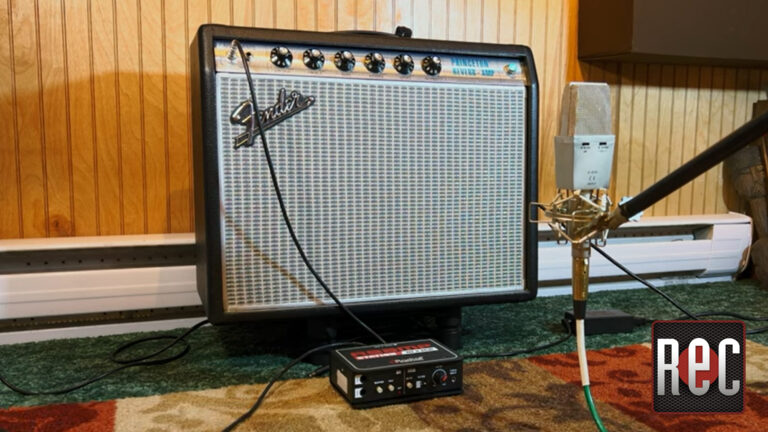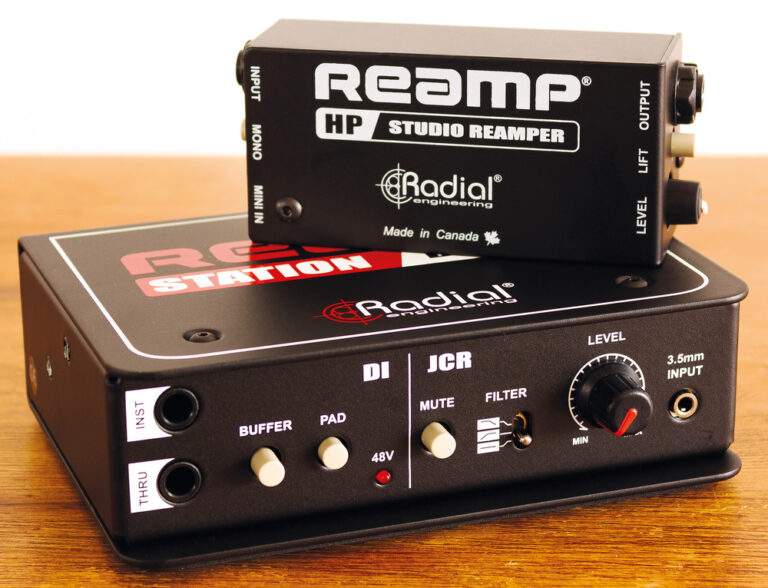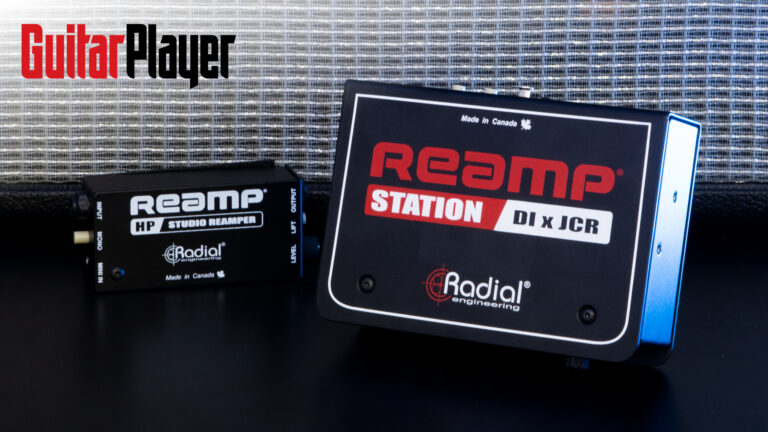Still in love with the sound of your 100 Watt head but your neighbours can’t stand the strain? There are plenty of beast-taming load boxes on the market but Canada’s Radial can always be relied on for a novel approach.
Based in Vancouver, Canada, Radial Engineering is one of today’s leading names in audio interface technology. Famed for DI boxes, interfaces and reamping equipment, their products are endorsed by a host of world famous players including Steve Lukather, Steve Vai and even the notoriously picky tone hound Eric Johnson. We’ve had a few Radial products through the doors at GI Towers too and we’ve never been less than highly impressed. Now they’re back with their new combination load box and attenuator, the Headload.
The Headload, like most load boxes, is designed to allow you to enjoy the tonal and responsive benefits of cranking your tube amplifier to full power whilst being able to reduce the final volume to more reasonable levels. By placing it between the speaker output of the amplifier and the speaker cabinet, the user is able to control output level independently from the amplifier itself.
Alongside the attenuator, the Headload also has Radial’s JDX Reactor direct box built in. The JDX is a speaker emulator that captures both the signal from the head plus the reactive load from the speaker cabinet, and allows for the direct recording of traditional guitar amplifiers. The Headload also includes the Radial Phazer, an analogue phase alignment tool that allows you to bring two sound sources together so that the fundamentals play in sync.
Investigating the attenuator element first, I found the Headload to work as well as any load box I’ve experienced. A simple Load control allows the user to reduce the wattage of the amplifier from 100% down to 20% in 20% increments, whilst an additional Range control allows precise control over the amp from 20% power down to 1% – an ideal solution for quiet playing at home, where even 20% of your amp’s full power is likely too loud. I thought this was a great, very usable function that many players will appreciate in practical scenarios.
There are also Low and High resonance controls. Even though the tone remains the same regardless of how you set the Headload (the amp itself is unaffected after all), the natural effect of reducing the volume is the loss of some of the highest and lowest frequencies, so these additional controls are great for enhancing the extremities of the tone and restoring any lost ‘punch’. This is another really practical feature that will get a lot of use from many players, especially in live environments.
The Headload is capable of handling up to 130 Watts RMS of continuous power and peaks of 180 Watts, so it’s more than capable of attenuating the output of the vast majority of guitar amplifiers out there.
The thing that really gives the Headload its versatility is the inclusion of the JDX Reactor direct box. The unit can be used as a ‘dummy load’ by turning the speakers off (simply by turning the Load control to ‘off’), which allows for direct recording with the speaker emulation in complete silence. The JDX Reactor takes both the sound from the amp head and the back electromagnetic impulse from the loudspeaker to create a more realistic rendering, and on the Headload features six different voicings and a two-band EQ to allow players to really hone in on the exact sound they’re going for.
Speaker emulation has been the biggest challenge for the world of modelling and direct recording; whilst pre-amp and power amp modelling has come a long way over the last decade, in my opinion there’s something about speaker emulation with impulse responses that still trails behind the traditional microphone and cabinet method. Although good results are definitely possible they take hard work and a lot of experimentation.
Taking this into account it’s good to see Radial trying a fresh approach and the amount of tweaking possible, especially considering the simplicity of the controls, really does a good job of creating a usable system. There are many occasions where speaker emulation is preferable to miking a cabinet; asides from recording at low volumes, the isolation offered by direct signals can make sound engineers’ lives a lot easier in both live and studio environments. With the amount of control on offer from the JDX Reactor it would be difficult not to get a pleasing tone and worthwhile end product.
Another useful option the Headload offers is an unaffected direct signal, should users wish to apply their own third-party speaker emulation.
Of course many engineers prefer to combine a direct feed with a microphone signal, giving them ultimate flexibility both at gigs and when recording. This is where the inclusion of the Radial Phazer control really pushes the Headload to the next level of versatility. It’s possible to combine both the amp’s speaker cabinet (either attenuated or at 100% full power) with the JDX Reactor and then use the Phazer to phase align the two signals. Just turning the single control knob and using your ears will allow you to ‘lock’ the signals together and create fat combination tones that are then easily balanceable in any mix.
The Phazer is an unbelievably useful function that really allows users to get the absolute best of both worlds and once again has many practical applications; players who like to send a direct signal to the front of house whilst maintaining a live speaker cabinet for stage volume will love it.
Overall, Radial has really impressed me with the Headload. Each individual feature of the unit is functional, well thought through and clearly designed with an attention to detail that ensures maximum flexibility in practical scenarios. However, when combined together into one unit, it really is the ultimate tool for dealing with guitar amplifiers in any situation. It’s a smart product that covers a lot of bases superbly, so I’m sure there are many different players and audio engineers out there who will love the Headload. It’s expensive but what you are getting is absolutely top quality professional gear without compromises.







